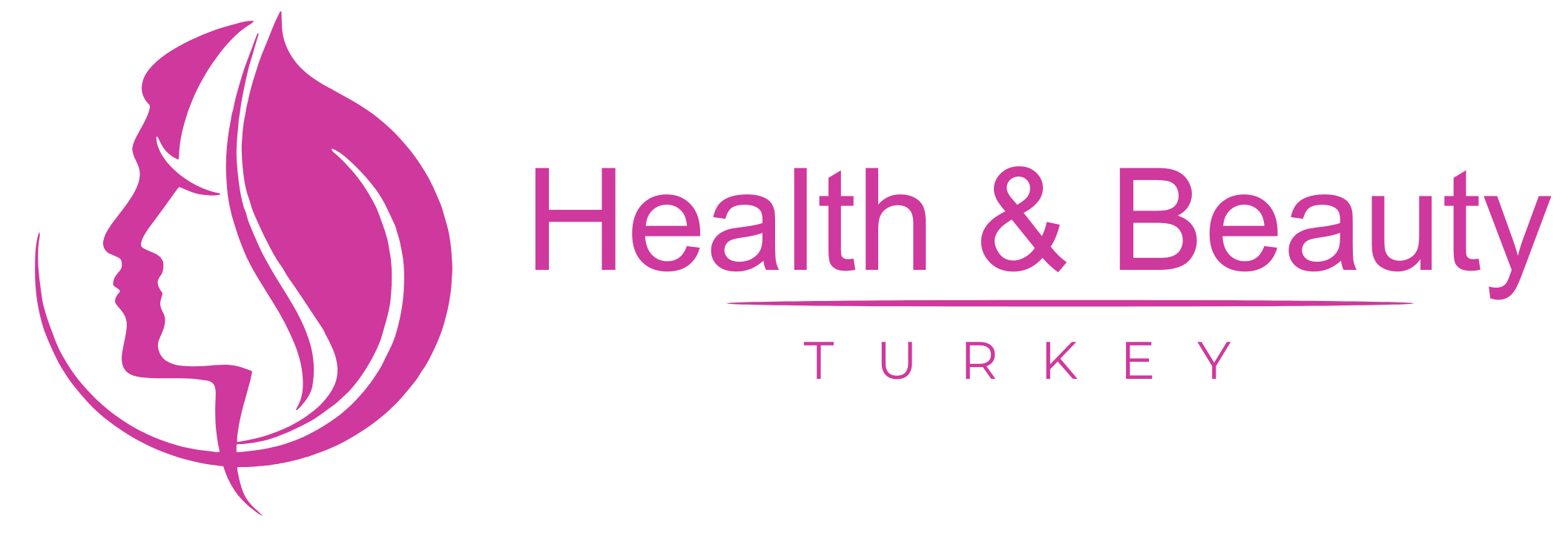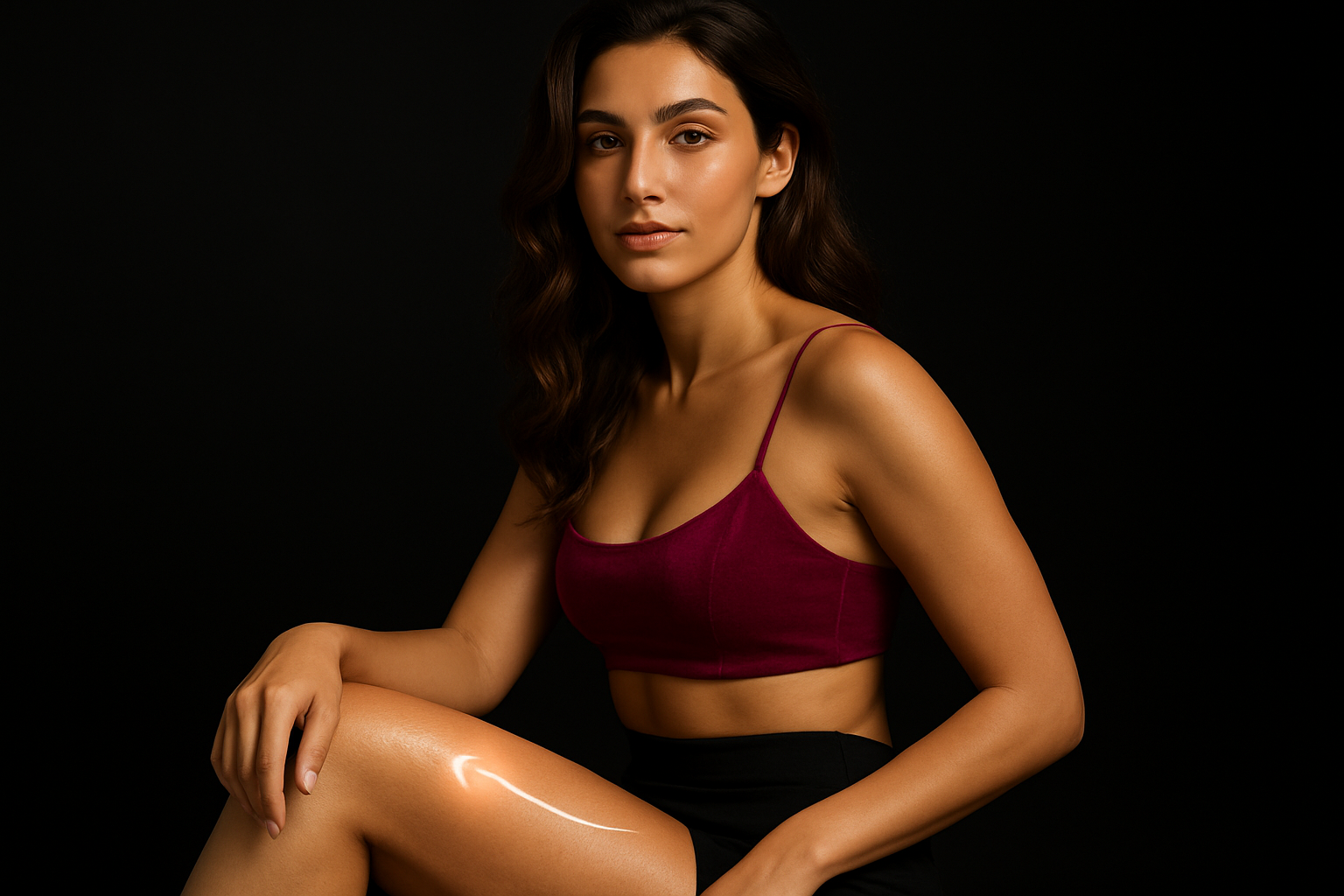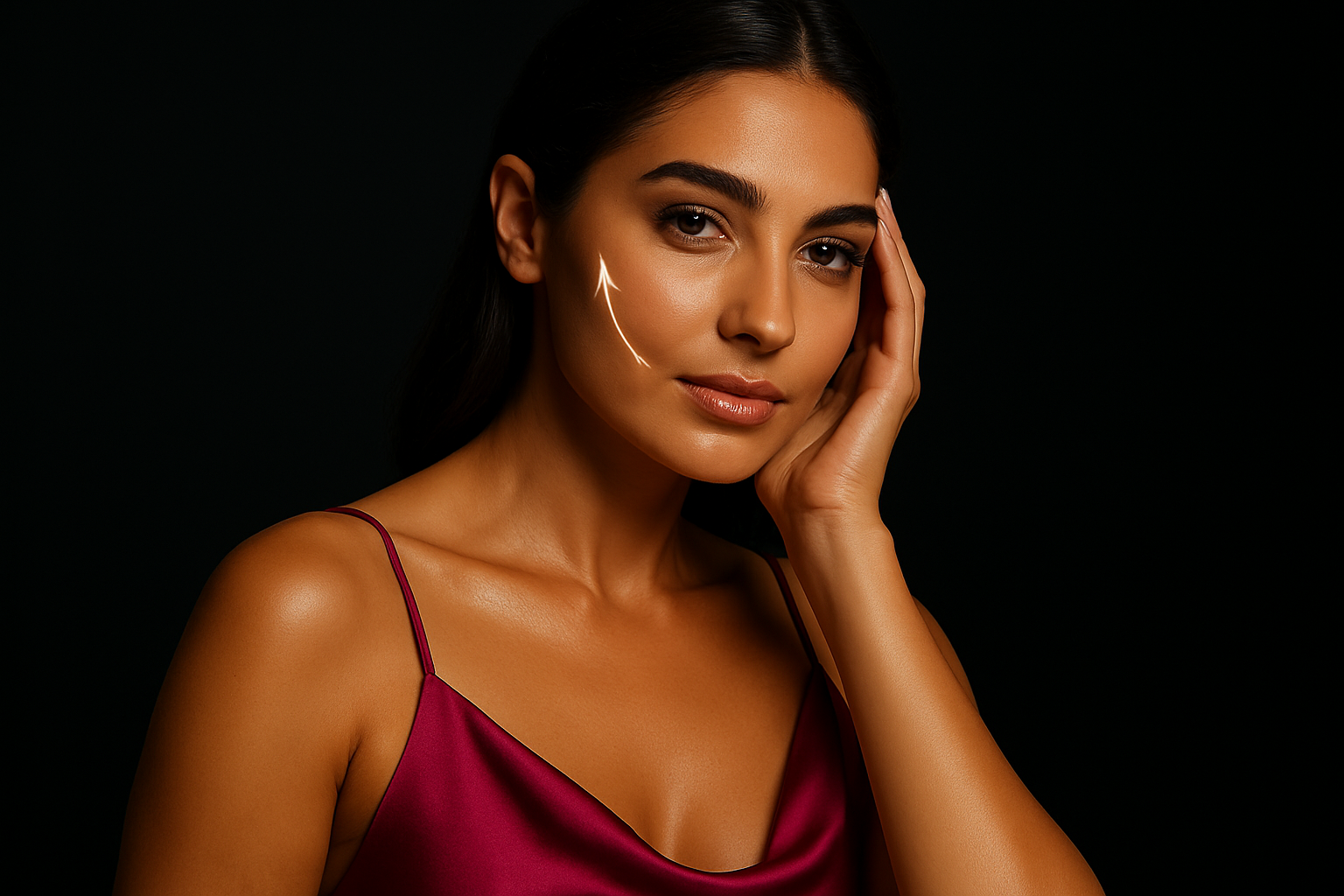Introduction
Cellulite is one of the most common aesthetic challenges faced by women, and sometimes men, around the world. These unwanted lumps that appear on the skin, often in the thigh and buttock area, can affect self-confidence and lead many to seek effective solutions.
With the continuous development in the field of cosmetic medicine, Turkey has become a leading global destination for providing the latest and most effective cellulite removal techniques, thanks to the expertise of its reputable doctors, its advanced medical centers, and its competitive costs.
At ‘Health & Beauty Turkey’, we fully understand the importance of achieving smooth and firm skin, and we also understand the concerns patients may have when considering any medical procedure, especially those related to safety and potential complications. For this reason, we strive to provide a comprehensive and comfortable treatment experience, emphasizing the highest standards of quality and safety, and offering full support to our guests from their arrival until their departure, and even beyond.
Medical Background
What is Cellulite? Understanding the Causes and Contributing Factors
Cellulite, sometimes referred to as ‘orange peel’ skin, is a change in the skin’s appearance resulting from fat deposits under the skin, leading to irregular bumps and dimples. Cellulite is not a disease but a very common aesthetic condition, with estimates suggesting that approximately 85% of women over the age of thirty experience it to varying degrees.
The causes contributing to the appearance of cellulite are numerous and often result from a complex interaction of several factors:
- Genetics: Genes play a crucial role in determining a person’s likelihood of developing cellulite, its severity, and its location. If your parents or close relatives have cellulite, you may be more prone to it.
- Hormones: Hormones, particularly estrogen, play a significant role in the appearance of cellulite. A decrease in estrogen levels after menopause is thought to contribute to its increased visibility. Other hormones such as insulin, catecholamines, thyroid hormones, and prolactin may also have effects.
- Skin and Connective Tissue Structure: Cellulite forms when fat deposits under the skin push through connective tissues into the upper skin layer. In women, these connective tissues are arranged vertically, making it easier for fat to protrude. In men, these tissues are arranged criss-cross, reducing the likelihood of cellulite appearing.
- Lifestyle:
- Diet: Consuming large amounts of fats, carbohydrates, salt, and insufficient fiber may contribute to increased fat accumulation and possibly fluid retention, exacerbating the appearance of cellulite.
- Prolonged Sitting or Standing: This can lead to poor circulation, which may contribute to the appearance of cellulite.
- Smoking: Smoking weakens blood circulation and affects skin structure.
- Lack of Physical Activity: Not exercising leads to muscle weakness and an increase in body fat percentage, increasing the likelihood of cellulite appearance.
- Weight Gain: Although cellulite can appear in individuals with a normal weight, weight gain can make it more noticeable.
- Skin Aging: As age progresses, the skin becomes less elastic and thinner, making the connective tissues less capable of hiding the underlying fat, thus increasing the visibility of cellulite.
Risk Factors that Increase the Likelihood of Developing Cellulite:
- Being a woman.
- Family history of cellulite.
- Being overweight.
- Following an unhealthy diet.
- Lack of movement and physical activity.
- Exposure to high levels of stress.
- Hormonal changes (e.g., pregnancy, menopause, or hormone replacement therapy).
Symptoms of Cellulite:
The main symptom of cellulite is the characteristic ‘orange peel’ or ‘cottage cheese’ appearance on the skin’s surface, typically seen in:
- Thighs.
- Buttocks.
- Abdomen.
- Arms.
Cellulite may not be apparent when standing but becomes clearly visible when sitting or when the affected area is squeezed.
Diagnosis of Cellulite:
In most cases, cellulite does not require formal medical diagnosis as it can be observed with the naked eye. Doctors typically assess the severity of cellulite based on its appearance and visibility. There are scales to classify cellulite grades from mild to severe, which can help determine the most suitable treatment.
Latest Updates and Research on Cellulite:
Research continues in an effort to understand the mechanism of cellulite formation more deeply and develop more effective treatments. Recent research focuses on:
- The complex role of connective tissues: Understanding how the structure of connective tissues changes over time and its impact on cellulite appearance.
- Cellular and biological effects: Studying the role of fat cells, fibroblasts, micro-inflammation, and microcirculation in cellulite development.
- Advanced imaging techniques: Using technologies such as ultrasound and MRI to examine the structure of the skin and subcutaneous tissues more precisely.
- Combination therapies: Exploring the effectiveness of combining different treatment techniques to achieve better and more sustainable results.
Suitable Candidates for Cellulite Removal Procedures
Eligibility criteria for cellulite removal procedures vary depending on the technique used. In general, cellulite removal procedures are suitable for individuals seeking to improve skin appearance in specific areas, especially after weight loss or with aging.
Who are the Suitable Candidates?
- Individuals with moderate to severe cellulite: Who have not responded to non-surgical treatments or lifestyle changes.
- Individuals in generally good health: Who do not suffer from chronic diseases that may impede the healing process or increase the risks of the procedure.
- Individuals with realistic expectations: Who understand that the goal is to improve appearance rather than completely eliminate cellulite by 100%, and that results may vary from person to person.
- Individuals with no blood clotting or wound healing problems.
- Pregnant or breastfeeding women (not recommended).
Who are Not Suitable Candidates?
- Individuals with serious chronic illnesses: Such as heart disease, uncontrolled diabetes, or immune deficiency.
- Individuals with blood clotting disorders: This can increase the risk of bleeding and complications.
- Pregnant or breastfeeding women: It is preferable to postpone the procedure until after pregnancy and breastfeeding.
- Individuals with a history of excessive scarring (keloids) or wound healing problems.
- Individuals who cannot adhere to post-procedure instructions: Such as avoiding sun exposure or maintaining a healthy lifestyle.
- Individuals with active skin infections in the area to be treated.
Preparation for Cellulite Removal Procedure: Step-by-Step
Proper preparation for the procedure is crucial to ensure the best results and minimize any potential risks. When considering traveling to Turkey for treatment, preparation involves several stages.
Before traveling to Turkey:
- Research and choose the clinic and doctor:
- Look for reputable and accredited medical centers in Turkey, such as ‘Health & Beauty Turkey’.
- Ensure that the doctors are qualified, experienced, and specialized in cosmetic surgery and cellulite treatment.
- Read reviews from previous patients and ask to see before-and-after photos.
- Initial Consultation:
- Major medical centers often offer initial consultations online or by phone. Take this opportunity to ask all your questions, discuss your goals, and understand the available options.
- Share any important medical information, including your medical history, medications you are taking, and any allergies you may have.
- Medical Tests and Examinations:
- The medical center will often ask you to undergo some basic tests and examinations to confirm your health fitness. These may include:
- Blood tests (CBC, kidney and liver function, coagulation factors, blood sugar).
- Electrocardiogram (ECG), especially for those over a certain age or with a history of heart disease.
- The doctor may request additional tests based on your condition.
- Health and Lifestyle Advice:
- Healthy Nutrition: Start following a balanced diet rich in vegetables, fruits, and lean proteins. Reduce sugar, salt, and saturated fats.
- Hydration: Drink sufficient amounts of water daily, as this helps improve skin elasticity and tissue health.
- Physical Activity: Exercise regularly to strengthen muscles and improve blood circulation.
- Quitting Smoking: If you are a smoker, quitting smoking sufficiently in advance of the treatment (several weeks) significantly reduces the risk of complications and improves the healing process.
- Avoid Certain Medications: Your doctor may ask you to stop taking certain medications and supplements that increase blood thinning (such as aspirin, some NSAIDs, and vitamin E) for a specified period before the procedure.
Upon arrival in Turkey (at the medical center):
- Comprehensive Medical Examination:
- After your arrival, the attending physician will conduct a thorough examination of the area to be treated, assess the degree of cellulite, and determine the optimal treatment plan based on your condition.
- The procedure details, potential risks, and expected outcomes will be discussed in detail.
- Final Consultation with the Doctor:
- This is another opportunity to ask any remaining questions. The doctor will explain the steps that will be taken during the procedure and how to prepare psychologically and physically.
- Anesthesia Options:
- The type of anesthesia depends on the chosen procedure. It may include local anesthesia, regional anesthesia (spinal), or general anesthesia. The doctor will discuss the most suitable option for your comfort and safety.
Cellulite Removal Procedure Steps: A Detailed Look
Cellulite removal techniques vary widely, ranging from surgical to non-surgical procedures. The choice of technique depends on the severity of cellulite, the target area, and patient preferences.
Before the Procedure:
- Signing the Consent Form: After ensuring your full understanding of the procedure, you will sign the medical consent form.
- Final Instructions: The medical team will provide final instructions, such as refraining from eating and drinking for a certain period before general anesthesia.
- Photographic Documentation: Photos of the area are often taken before the procedure to document the initial condition for later comparison.
During the Procedure:
The procedure details vary significantly depending on the technique used. Here’s an overview of some of the most prominent techniques available in Turkey:
First: Surgical Techniques (Used for severe cellulite or when accompanied by sagging skin):
- Skin Excision (Dermolipectomy) or Gluteal Lift:
- Objective: In cases of very severe cellulite accompanied by sagging skin, a surgical solution may be the most suitable. In this case, excess skin and fat are removed, and tissues are tightened to improve the overall appearance.
- Steps: Surgical incisions are made in discreet areas (e.g., bikini line or along natural body lines). The skin is separated from the underlying tissues, the tissues are reshaped, then excess skin is removed, and the incisions are closed with sutures.
- Anesthesia: Usually performed under general or regional anesthesia.
- Duration: May take several hours.
- Liposuction with modifications:
- Objective: Liposuction is used to remove large amounts of accumulated fat but is not a direct treatment for cellulite itself. However, modern liposuction techniques, such as laser or ultrasound-assisted liposuction, can help tighten the skin and break down the fibrous bands causing cellulite dimples.
- Steps: Fine tubes (cannulas) are inserted through very small incisions, and the fat is broken down and suctioned out. Sometimes, laser or ultrasound energy is used to help liquefy fat and tighten the skin.
- Anesthesia: May be local with sedation, regional, or general, depending on the size of the area and the amount of fat.
Second: Non-Surgical Techniques (Most common and effective for most cellulite cases in Turkey):
- Laser Treatment:
- Objective: Laser is used to break down fat, stimulate collagen production, and improve skin elasticity, as well as to break down the fibrous bands that pull the skin downward.
- Steps: Laser beams are directed at the skin, penetrating the tissues to achieve the desired effect. Some techniques use external lasers, while others use fine laser fibers inserted under the skin through very small incisions.
- Anesthesia: Often does not require anesthesia, or a topical anesthetic cream may be used.
- Duration: A session usually takes 30 to 60 minutes.
- Radiofrequency (RF) Treatment:
- Objective: Radiofrequency technology heats the deep layers of the skin, stimulating new collagen production, tightening tissues, and helping to break down fat.
- Steps: A special device is passed over the skin, emitting radiofrequency energy.
- Anesthesia: Does not require anesthesia.
- Duration: A session takes about 30-45 minutes.
- Ultrasound:
- Objective: Ultrasound waves are used to target and break down fat cells, and improve blood circulation.
- Steps: A device emitting ultrasound waves is applied to the skin.
- Anesthesia: Does not require anesthesia.
- Cryolipolysis:
- Objective: Fat cells in the targeted areas are frozen, leading to their death and gradual elimination by the body.
- Steps: A special device is placed on the skin that controllably cools the area.
- Anesthesia: Does not require anesthesia.
- Enzyme Injections:
- Objective: Injecting specific enzymatic substances (like collagenase) helps break down the fibrous bands that pull the skin downwards, improving the appearance of cellulite.
- Steps: The substance is injected directly into the cellulite areas.
- Anesthesia: A topical anesthetic cream may be used.
- Cellfina Technique:
- Objective: This technique is considered a minimally invasive solution. It uses a precise blade to cut the fibrous bands under the cellulite, allowing the skin to lift and reducing dimples.
- Steps: Local anesthesia is used, then a small device is inserted to cut the bands.
- Anesthesia: Local.
- Duration: The session takes about 45-60 minutes.
- Cellulaze Technique:
- Objective: A sub-dermal laser technique used to break down fat, cut fibrous bands, and stimulate collagen production to tighten the skin.
- Steps: Fine laser fibers are inserted under the skin through very small incisions.
- Anesthesia: Local or regional.
- Duration: About one hour.
After the Procedure and Recovery Period
The recovery period and expected results after cellulite removal procedures in Turkey vary depending on the technique used.
Immediate Recovery Period:
- You may need to wear compression garments (girdles) in the treated area for several days or weeks, depending on the type of procedure, to help reduce swelling and support healing.
- You will receive detailed instructions on how to care for the wound (if any), medications to take (such as pain relievers or antibiotics), and activities to avoid.
Medical Follow-up:
- You may need follow-up visits with your doctor to ensure the healing process is progressing well.
- The doctor will assess the initial results and answer any questions you may have.
Healing Period:
- First few days: You may experience some pain, swelling, and bruising in the treated area. These symptoms are normal and gradually improve.
- First few weeks: Results begin to appear as swelling subsides. You may need to avoid strenuous physical activities and heavy lifting.
- Final Results: The time it takes for final results to become fully apparent varies depending on the technique used. Some procedures may take weeks, while others may require several months to see the full effect, especially those that stimulate collagen production.
Innovative Cellulite Treatment Options in Turkey
Turkey is distinguished by its adoption of the latest medical and aesthetic technologies, making it a leading destination for effective and innovative cellulite removal solutions. At ‘Health & Beauty Turkey’, we are committed to providing the latest scientific advancements in this field, in collaboration with top doctors and specialized centers.
Latest Technologies and Innovations:
- Advanced Laser Techniques: Includes high-frequency, high-precision laser devices that target tissues accurately, minimizing surrounding damage and accelerating healing.
- Combination of Techniques: Often, combining different techniques (e.g., laser with radiofrequency, or ultrasound with liposuction) achieves better and more comprehensive results.
- Innovative Injection Techniques: Continuous development of injectable materials that help reshape tissues and improve the appearance of cellulite.
- Advanced Non-Surgical Devices: Radiofrequency, ultrasound, and cryolipolysis (fat freezing) devices offer noticeable results without the need for a long recovery period.
Advantages of Treatment at ‘Health & Beauty Turkey’:
- Doctor Expertise: We have a team of the most skilled certified plastic surgeons and dermatologists with extensive experience in cellulite removal and cosmetic issue treatment.
- Advanced Technology: We utilize the latest devices and technologies to ensure the effectiveness and safety of procedures.
- Personalized Approach: Each patient’s treatment plan is designed based on their individual condition, goals, and expectations.
- Comprehensive Service: We offer an integrated package including consultations, procedures, follow-up, as well as logistical assistance services.
- Competitive Pricing: We offer high-quality treatments at prices considered very competitive compared to many other countries.
Addressing Patient Concerns: Safety First
At ‘Health & Beauty Turkey’, we understand that considering any medical procedure, especially surgical ones, may raise concerns about potential complications. Our patients’ safety is our utmost priority, and therefore, we offer innovative solutions to ensure your peace of mind.
Potential Risks and Complications:
As with any medical procedure, cellulite removal procedures, especially surgical ones, can involve certain risks, which may include:
- Bleeding.
- Infection.
- Persistent swelling and bruising.
- Changes in sensation (numbness or temporary/permanent loss of sensation).
- Asymmetrical results or dissatisfaction with the final appearance.
- Scar formation.
- Reactions to anesthesia.
- Blood clots (rare).
It is important to emphasize that most of these complications are rare, and the risk of their occurrence can be significantly reduced by choosing a skilled doctor, an accredited medical center, and strictly following pre- and post-procedure instructions.
Medical Tourism Insurance Against Surgical Complications:
To enhance your confidence in us and provide maximum safety, ‘Health & Beauty Turkey’ offers Medical Tourism Insurance Against Surgical Complications. This insurance aims to protect you and cover any unexpected costs that may arise from surgical complications.
Insurance Features:
- Inpatient Treatment Coverage: The insurance covers the costs of necessary treatment and medical care in case of complications requiring hospitalization.
- Valid for 6 Months: The insurance extends for up to six months from the date of the procedure, providing you with long-term peace of mind.
- Coverage for Travel and Accommodation Costs: If the condition requires corrective surgery or additional medical follow-up, the insurance covers part of the travel and accommodation costs necessary to return to Turkey.
- Operation Only in Ministry of Health Accredited Clinics: To ensure the highest standards of quality and safety, this insurance applies only to clinics and hospitals officially accredited by the Turkish Ministry of Health, with which we are committed to working.
This insurance reflects our firm commitment to providing safe, high-quality medical care and gives you reassurance that you are in safe hands during your treatment journey.
Practical Tips for Patients Traveling for Treatment
Traveling to another country for medical treatment may seem daunting, but with good planning, it can be a positive and rewarding experience. At ‘Health & Beauty Turkey’, we offer full support to assist you every step of the way.
Travel Tips:
- Early Planning: Start planning your trip well in advance. This includes researching the medical center, booking appointments, and travel arrangements.
- Continuous Communication: Maintain regular contact with our medical representatives at ‘Health & Beauty Turkey’. They will assist you with everything, from pre-travel consultations to accommodation and transportation arrangements.
- Travel Documents: Ensure your passport and visa (if required) are valid.
- Luggage: Pack smartly, including comfortable clothing, easy-to-wear shoes, and any personal items you need. Don’t forget to bring your regular medications.
- Local Currency: Familiarize yourself with the local currency (Turkish Lira) and how to exchange it or use credit cards.
Psychological Preparation:
- Set Realistic Expectations: Discuss your goals and expected outcomes honestly with the doctor.
- Seek Reliable Information: Read about the procedure, but rely on credible sources provided by the medical center.
- Prepare for Recovery: Understand what to expect during the recovery period and plan for adequate rest.
- Stay Connected: Talk to your family and friends about your plans; their support can have a significant positive impact.
- Make the Most of Your Time: You can enjoy visiting tourist attractions in Turkey during your recovery period (after consulting your doctor).
Lifestyle Tips After Treatment:
- Adhere to Doctor’s Instructions: This is the most important advice. Strictly follow all instructions regarding wound care, medications, and activity restrictions.
- Healthy Nutrition: Continue eating a balanced diet to support the healing process and maintain results.
- Hydration: Drinking enough water is essential for overall health and skin health.
- Physical Activity: Start with light activities as directed by the doctor, gradually increasing intensity. Regular exercise helps maintain results and strengthen the body.
- Avoid Excessive Sun Exposure: The treated area may be sensitive to the sun after the procedure. Use sunscreen regularly.
- Skincare: Use gentle skincare products suitable for your skin type.
Cost of Cellulite Removal in Turkey
Turkey is considered a cost-competitive medical destination, especially when compared to many European and North American countries. The cost of cellulite removal in Turkey varies significantly based on several factors, including:
- Type of technique used: Surgical procedures are more expensive than non-surgical ones.
- Area to be treated: The larger the area, the higher the cost.
- Number of sessions required: Some techniques, especially non-surgical ones, require multiple sessions to achieve desired results.
- Reputation and experience of the doctor and medical center: Centers with good reputations and highly experienced doctors may have higher costs.
- Treatment package offered: Some packages may include accommodation, transportation, and follow-up costs, affecting the overall price.
In general, the cost of a non-surgical cellulite treatment session in Turkey can range from approximately $250 to $1000 USD per session. For more complex surgical procedures, the cost can range from $3000 to $7000 USD or more, depending on the scope of the surgery.
Important Note: These prices are estimated averages and may vary. For an accurate price estimate for your specific case, we recommend contacting the ‘Health & Beauty Turkey’ team directly for a free consultation and detailed assessment.
Why Choose ‘Health & Beauty Turkey’?
At ‘Health & Beauty Turkey’, we pride ourselves on offering a comprehensive treatment experience that combines outstanding medical expertise, the latest technologies, and exceptional personal service.
Our Doctors’ Expertise:
- A team of the most skilled certified plastic surgeons and dermatologists with extensive experience in cellulite removal and cosmetic issue treatment.
- Continuous commitment to training and development to keep up with the latest global techniques and methodologies.
Comprehensive Support for Your Services:
- Airport Pick-up: We provide airport pick-up and transfer to the hotel.
- Comfortable Accommodation: We collaborate with comfortable, high-quality hotels to ensure your stay.
- Specialized Translators: We provide translators to accompany you to all medical appointments and ensure smooth communication.
- Continuous Medical Follow-up: Our care does not end when the procedure is completed; we extend it to provide the necessary follow-up to ensure your full recovery and satisfaction with the results.
Safety and Trust:
- International Standards: We work with medical centers equipped with the latest technologies and adhering to the highest international standards of hygiene and quality.
- Comprehensive Insurance: We offer medical tourism insurance against complications for your peace of mind.
- Transparency: We are committed to complete transparency in all aspects of treatment, from costs to risks and expected outcomes.
Frequently Asked Questions
Q: Is cellulite removal painful?
A: The level of pain varies depending on the technique used. Non-surgical procedures are often comfortable with minimal discomfort, and some procedures may require local anesthesia to alleviate any potential pain.
Q: How long do I need to recover after cellulite removal in Turkey?
A: The recovery period depends on the type of procedure. Non-surgical procedures may allow you to return to your normal activities the same day or the next. Surgical procedures require a longer recovery period, which can extend to several weeks.
Q: Are the results permanent?
A: Results depend on adherence to a healthy lifestyle. While treatments contribute to improving the appearance of cellulite, genetic factors and lifestyle can influence its reappearance. Periodic maintenance sessions may be needed.
Q: How many sessions do I need?
A: The number of required sessions varies depending on the severity of cellulite and the technique used. Some techniques may require a single session, while others may need a series of sessions to achieve optimal results.
Q: Can I combine cellulite treatment with other cosmetic procedures?
A: Yes, in many cases, cellulite treatment can be combined with other cosmetic procedures such as body contouring or skin tightening, but a doctor’s consultation is necessary to evaluate the best treatment plan.
Getting rid of cellulite and regaining smooth, firm skin is an achievable goal, especially with the advanced technologies and medical expertise available today. Turkey, with its state-of-the-art medical centers and skilled doctors, offers you the ideal opportunity to achieve this goal safely and effectively.
At ‘Health & Beauty Turkey’, we are here to accompany you on your journey towards your dream skin. We combine deep expertise, the latest technologies, personal attention, and absolute safety through medical tourism insurance, to ensure you have a successful and comfortable treatment experience.
Don’t let cellulite affect your self-confidence any longer!
We invite you to contact our accredited medical representative for a free consultation. We will be happy to answer all your inquiries, assess your condition, and provide you with a personalized treatment plan.
Begin your journey towards perfect skin today with ‘Health & Beauty Turkey’.




